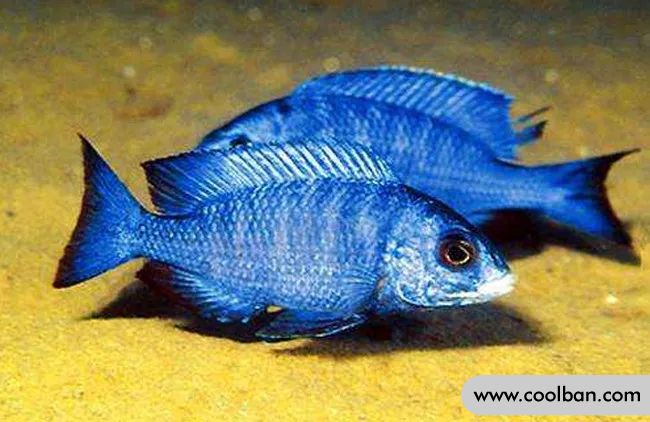How to Raise Sapphire Fish
The temperament of the sapphire fish is relatively mild, but the breeding season is fierce, and during the breeding season, both sapphire and sapphire have the concept of territory. Sapphire has the habit of digging bottom sand, and the non-breeding sapphire fish are docile and quiet, and can be mixed with other ornamental fish.
Morphological characteristics of sapphire fish
Adult sapphire fish can reach lengths of 12-15 centimeter. Sapphire fish will become sparkling under the light, especially their heads, like a gem in the sun, hence the name sapphire fish.
The sapphire fish has a spindle-shaped body with slightly flattened sides, a fan-shaped caudal fin and a straight trailing edge. The head is long, the body color is light gray-blue, the side is slightly yellow, the abdomen is slightly blue-yellow, the larvae have horizontal stripes, and the whole body is covered with neat small light blue spots when mature, especially its head, which gleams in the light Glowing and very pretty. Distinguishing males and females is not difficult. Males have longer dorsal and anal fins with pointed ends, and females have a swollen abdomen at sexual maturity.

Breeding environment of sapphire fish
Sapphire fish are relatively easy to keep. Due to their sturdy physique, they do not have strict requirements on water quality, preferring weakly acidic or neutral water quality. The recommended feeding water temperature is 20-28°C, and it grows better at a water temperature of 25-27°C.
The rearing of sapphire fish is relatively easy, and the requirements for water temperature and water quality are not high. The difference between males and females is obvious, males are brightly colored, and females are lighter in color. The feeding water temperature is 27-28 ℃, and the water quality is neutral. When rearing, the bottom sand should be laid in the rearing box, and the tiles should be used as nests.
Like ruby fish, sapphire fish are larger and should be kept in larger aquariums. The fish tank should be covered with bottom sand, various aquatic plants, and some rockery caves can be arranged, which is suitable for its habit of drilling holes and pecking sand for food, and the light should not be too strong.
Sapphire fish are easy to raise and do not require high water quality, but they like new water and can adapt to old water. They are highly adaptable to changes in water temperature, generally not lower than 20 °C. Fish like to feed underwater. It has a mixed diet and a big appetite. It not only eats animal and plant food, but also likes to eat red worms, water earthworms, and pork and liver.
Except for body color, sapphire fish are very similar to ruby fish in both body size and size, but the temperament of sapphire fish and ruby fish are quite different. Some small fish are kept in polyculture to prevent sapphire fish from attacking or swallowing small fish when they are hungry.

Feeding points for sapphire fish
Sapphire fish are omnivorous fish and like to eat animal feed during their daily feeding. Of course, many aquarists will want to raise their own sapphire. During the feeding process, the feeding and daily feeding of sapphire fish will be different.
Raised sapphire fish should also pay attention to the nutritional balance of the feed. Do not feed animal bait alone, it is easy to cause sapphire fish to be picky eaters. The sapphire fish hatches juveniles in 2 to 3 days, and the juveniles stay in the mouth of the broodstock, and swim out of the mouth of the broodstock for food after about 7 days.

What should I do if the sapphire fish is infected by parasites
When small black or brown spots up to 2mm long appear on the body and fins, and sometimes the eyes and mouth, of domestic sapphire fish, it may be an indication that they have been infected with dark spots.
1. Details of infection black spots
These spots are cysts that contain intestinal fluke larvae, such as the larval stage also known as Dermatophaga. Adult worms live in the guts of waterbirds that become infected by eating fish that contain larvae.
2. Black spot parasitic water snail
In the guts of waterbirds, the membranes around each larva unravel, and the worms mature after a few weeks. The eggs laid by the adults are excreted with bird droppings, and the eggs that fall into the water develop into free-swimming larvae that parasitize the snails.
3. Parasitic suitable fish
After a few weeks, the parasite leaves the snail and begins another cycle, infecting a suitable fish host. When the parasite reaches about 1 mm long, a black film forms on each bug's body, forming distinctive spots under the fish's skin.
4. Treatment of dark spots
New antiparasitic treatments can kill parasites, but once dark spots form, they leave marks. The most effective preventive measure is to break the parasite's growth cycle, ensuring that water birds are not near the pond or aquarium, and that parasite-infected snails do not appear.
